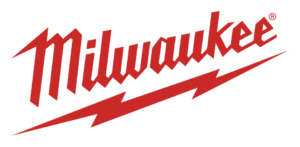By Patrick Donovan, Northcentral Construction
The facts are clear and demand that we, as an industry, recognize fall hazards and address those hazards. Our goal should be to achieve best practices and not just regulatory compliance. We all know that our workforce is critical to our success, and we need to do everything we can to provide a safe workplace for them. By focusing on falls we can address many of the deadliest challenges they face.
Every year fall protection is at the top of the most frequently violated standards, and typically occupies 3-4 of the spots in that top ten. Failure to take the correct steps to identify and address fall hazards not only could cost penalties from OSHA fines but could have a much higher price…. death. The CDC reports that every year falls account for about 3 million emergency room visits and about 1 million hospitalizations. Statistics tell us that just over one-third of construction workplace deaths are a result of a fall, slip or trip. How can we not take action to help stop those deaths and keep our workers safe?
The title of this article would lead you to believe there is a choice, but the reality is we need to do both prevention and protection. In all areas of safety, by taking preventive steps, we may be able to eliminate a hazard which is always the most effective solution.
All projects that include working from heights require planning that must begin with a risk assessment. At the outset of a project, the first step to mitigate risks is to identify foreseeable hazards and help to eliminate them. After all, the most effective remedy is to avoid working near edges wherever possible. However, for many jobs, this is unavoidable. In these instances, control measures need to be implemented and regularly reviewed to maintain a healthy and safe work environment.
To start, make sure that you understand the different heights at which OSHA requires fall protection. In construction, unless otherwise stated, it’s 6 feet. In general industry (think warehouse and shop facilities) the minimum height is 4 feet. On scaffold the minimum height is 10 feet. In steel erection it is either 15 feet or 30 feet depending on the task being done. On fixed ladders the minimum height is 24 feet and on portable ladders there is no height requirement. A proper understanding of this and the requirements of each area of the appropriate regulations gives you the minimum basis to start developing a fall protection plan.
First you need to identify the hazards. To identify the fall hazards, you must look at the job and locate all the areas where a fall might occur. Some of the common areas are:
- Foundation walls
- Elevated decks or floor surfaces
- Roofs
- Elevator shafts
- Ladders
- Scaffolding
- Holes or pits
- Excavations
- Machinery with elevated work surfaces or cabs
Environmental factors, like time of year and expected weather, should also be considered. Additional precautions and steps need to be taken to address the slip factor associated with rain, snow, ice etc.
Next you must look at the tasks that will be performed in those areas. The tasks that require working near a fall hazard then require the implementation of fall protection methods. Those methods include guard rails, fall restraint, safety nets, and personal fall arrest systems. Consider keeping your solutions as simple as possible and being consistent across job sites to help minimize employee confusion.
Next you need to choose the method that will work best with each task and inform all affected workers. You must ensure that the workers know what fall protection method is to be used and that they have been properly trained in how to inspect, install, and use the system chosen.
The final step, and one often neglected, is to develop a rescue plan in the case of a fall. The goal should be the prompt and safe rescue of the fallen worker. The plan must address all levels of rescue including self-rescue, assisted self-rescue (think ladders), mechanically assisted self-rescue (think snorkel lifts) and rescue pick off using multiple people and rescue equipment. In all falls it is best to have the person who fell evaluated by medical personnel due to potential internal injuries. The plan should include identifying who will call emergency personnel. That person should also meet the rescue personnel and guide them to the fallen worker. Finally, identify the steps to take after the worker leaves for the medical facility. These steps should include notifying management of the fall and injury.
When the job starts it is good practice to visit the jobsite to make sure that the system is being used properly and address any concerns. During the progress of the job, leaders at all levels need to be vigilant in ensuring compliance with the plan and taking corrective action as needed.
We work in an industry that has many dangers and it is essential we respect those dangers and take actions to address the hazards they cause. Proper planning and execution of a fall protection plan is the key to helping workers avoid a fall. If a fall occurs, the plan should help protect workers and help limit injuries.













